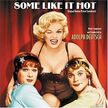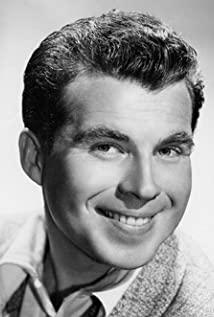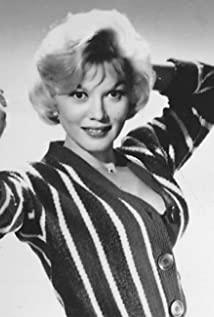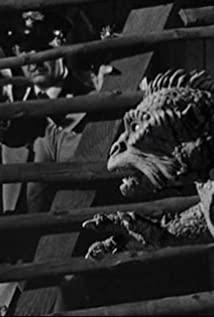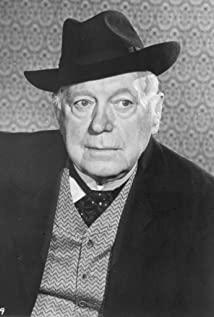Last year, I watched selected films of Billy Wilder, such as "The Merry Girl", "Double Indemnity", "Sunset Boulevard", "The Witness for the Prosecution", "Peachy Apartment", noir films and comedy films, all of which impressed me deeply. His "Passionate Like Fire" is also a black comedy, and I want to talk about the imprint of its era around the theme of this film.
1. Although Chicago and the Gangs is a comedy, the beginning is full of film noir flavors. The gangsters were fighting with the police. The coffin was not a human but a bottle of wine. The subtitles on the screen were "Chicago 1929". As we all know, Chicago is one of the four major cities in the United States. It is located in the southern part of Lake Michigan on the Great Lakes. The rapid economic development of Chicago has made the gap between the rich and the poor wider and wider, and there have been traditional gangs formed by Italian immigrants after World War I and modern gangs formed by blacks who could not stand in the South. The gangsters in the movie should belong to the traditional family gangs. It must be mentioned that there is also a real event inserted in the film: the "Valentine's Day Massacre" in Chicago on February 14, 1929: when the Chicago Al Capone gang (made up of Italian-Americans) dressed as police, forced Seven of the gang (Irish-American and German-American) led by "bug" Moran lined up against the wall in the garage and shot them mercilessly. Six Moran gang members and Dr. Reinhardt H. Schwimmer were found dead against a wall in a garage at 2122 North Clark Street in North Chicago.
2. Prohibition and Jazz Prohibition may seem strange to us, but it did exist in the form of law in the United States for some time. America was a puritanical country and believed that alcohol was the source of poverty and crime. The 1917 Constitutional Amendment was passed, stipulating that no intoxicating beverages shall be made, sold, or transported within the territory of the United States, and the import and export of intoxicating beverages shall be prohibited. Strict laws had a certain effect in stabilizing the social order in the first few years, but also caused the underworld to rise. Gangsters sell bootleg alcohol through underground channels and open various dark bars. Wine and music cannot be separated, and jazz has also become popular. The black jazz stars of Louis Armstrong and Duke Ellington shaped the jazz age. The speakeasies and clubs of Harlem at the time attracted not only blacks but also whites. Young people flocked to jazz clubs to dance, and Charleston dances and tap dances swept the country (this led to the birth of new women's shoes, and at that time Tutankhamun's Pyramid was opened, and the shoes designed in its pattern became time stamp). Like most popular crazes, though, dancing has been criticized, with some saying "Satan is in the ballroom", but that hasn't dampened the dance craze across the country. After that, jazz spread to China, and "Night Shanghai" and "Rose Rose I Love You" have spread to today.
3. The character design of the flashy and emptiness movie is very interesting: two down-and-out young men dressed as women to hide from gangsters, and a female showgirl who worshipped gold went into the band to catch a golden tortoise-in-law. A movie runs through a series of lies. In order to catch up with Xiu Ka, Qiao lied that he was Shaodong of Shell Oil; Xiujia also lied that he was from an upper-class musical family in order to chase Shaodong. Xiuga said that he didn't like strong men, but men who wore glasses and read the headlines of the Wall Street Journal. But in the end, she married a poor boy who played saxophone. Isn't this the biggest irony? There is a blank space in the movie: we have studied history, and we know that 1929 was the last carnival before the Great Depression. Where are millionaires like Osku going? The United States made a fortune during World War I, the country was once prosperous, and people indulged in pleasure. In the words of the writer Fitzgerald, it was an age of wonder, an age of art, an age of lavish spending, and an age of irony. Behind the feasting and feasting of this era, emptiness and helplessness are hidden.
4. Women's new ideas and new fashions In the 1920s, the Constitutional Amendment gave women the right to vote, and more and more women moved from the family to the workplace. A group of "new women" appeared on the stage of American history. They pursued fashion, pursued harmony Equal status for men, the pursuit of the "flapper" trend, short haircuts, cigarettes, and dancing to jazz music naturally changed their outfits: they put on loose skirts, freed from corsets; they put on low heels Sturdy shoes to dance better; they wear fancy headgears, strings of pearl necklaces, or bell hats, the same every day... And, flat chests are also sought after by women: dresses Straight down, no curves can be seen on the body, and the figure is more masculine. I remember Xiuga once said this to Jerry on the beach:
In a word, nobody's perfect, the era of intoxicated and flashy emptiness has passed, but there are still many, many things left for us to think about.
Finally, pay homage to director Billy Wilder!
------split line------
At the beginning of the film, the two poor boys have this dialogue: (Joe is really a big prophet and a crow's mouth, and the director is really naughty)
View more about Some Like It Hot reviews




